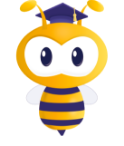课前
BEFORE CLASS
课前测评,了解情况,获取针对性学习计划
领取内部学习资料、了解课程安排以及服务内容
领取学习、复习计划,完成开课前内容学习
课中
IN THE CLASS
实时反馈学习结果,及时调整学习、复习计划
及时完成课后学习内容、以及课上知识点复习
学习问题反馈,及时给到老师在课上予以解答
课后
AFTER CLASS
根据同学学习情况,提供课后学习计划、冲刺学习计划等
保障课后服务执行到位(答疑服务、课程回放、后续课程、报名指导等)
考试后免费分析成绩和提供专业的针对性提升方案
双系统教学体系
三重保障 为700+保驾护航
五阶段全程陪伴
科学的课程设计,10年教学经验积累,实力研发针对GMAT考试规则的课程体系
核心方法
数学4大考点,27个知识点;SC8大考点,
7种核心关系,CR5大推理模型8大题型;
RC6种阅读关系3大类考点。
解决突破
方法灵活应用,轻松应对各类考点的高阶
难题。
核心方法课
针对GMAT考试分项,搭建解题框架,
逐一击破考点。
解决突破课
针对各种考点变化,构造解题思路,
灵活应对各类高阶难题。

硬核资深讲师团队+全班型覆盖
资深教师阵容,每一位老师都有丰富的教学、授课经验。 课程选择丰富,适合自己的才是最好的。
GMAT资料合集;执行保障300难题/OG中文解析;1对1学管老师;私人订制学习计划; 学习进度分析报告;考前机经课;资深讲师解答; 学习社群;刷题/单词APP;仿真模考系统; 换库日历;考位查询小程序。
科学课程体系,整体提升出分效率。 紧跟GMAT考点,构建解题思维,课前课中课后三阶段全程聚焦学习进度。
1对1个性化复习方案,每周定期跟进,动态调整复习节奏
每日学习计划
每周两次跟进
动态调整复习节奏
全程监督辅导
1v1个性化复习方案
 申友雷哥GMAT高分时刻
申友雷哥GMAT高分时刻
学生评语

王同学
强烈推荐Verna老师的SC直播课和Amanda老师的SC录播课,两个全都看完有种打通任督二脉的感觉,老师们商科的时候细节扣的很细
孙同学
我好喜欢Cheryl老师啊,每节课的内容都能直击痛点,让我的CR有种醍醐灌顶的感觉,真的推翻了我之前的自学方法,效果特别好
黄同学
elisha老师的课我爱了,感觉每一句话都是重点,他讲东西我就是很愿意听,而且不会走神想其他的
陆同学
Verna老师上课互动特别多,打call!,上她的课能让我在课上就发现思路问题并及时纠正,细节扣得很细
张同学
Kevin和amanda老师的课不愧是申友王牌,就上了六节1对1让我出分740,真的是GMAT提分的一剂猛药
杨同学
首先amanda老师俺女神,让我SC有了思路,做题也轻松不少。我觉得语文还是不在于刷题在于思路!数学的话也要先熟悉考点和知识点再刷题 申友雷哥GMAT讲师
申友雷哥GMAT讲师
 申友雷哥GMAT备考宝典
申友雷哥GMAT备考宝典
 申友雷哥GMAT面授地址
申友雷哥GMAT面授地址
MAT+旨在更好的服务于用户帮助学生能够快速上分,现已在上海、北京、广州、成都、武汉等地开设分公司
考生可以更好的于GMAT+面对面互动学习

上海申友教室
上海市徐汇区文定路208号德必徐家汇WE艺术楼2楼205

北京申友教室
北京市朝阳区雅宝路7号 E园EPARK大厦504

长沙申友教室
湖南省长沙市开福区万达广场-C3 1510室

广州申友教室
广州市天河区体育东路116号财富广场西塔1206

重庆申友教室
重庆市渝中区邹容路68号大都会广场16楼1603-1604室

青岛申友教室
青岛市南区香港中路36号招银大厦1006

成都申友教室
四川省成都市锦江区春熙路街道梓潼桥正街25号西部文化产业中心7-8楼

武汉申友教室
湖北省武汉市洪山区珞喻路889号光谷融众国际23层2302室
 申友雷哥GMAT高分教材
申友雷哥GMAT高分教材

申友GMAT长难句之光

GMAT阅读高分攻略

申友GMAT语法真题名师解析

申友GMAT700+系列阅读紫皮书

申友GMAT第九代教材,CR+Q+IR部分

申友GMAT第九代高分教材,AWA+RC部分









 请填写手机号
请填写手机号
关闭

Copyright © 2021 All Right Reserved 申友雷哥教育 版权所有 沪ICP备17005516号-3 免责声明 互联网经营许可证编号:沪B2-20210282


toefl.viplgw.cn
手机号不能为空!
验证码不能为空!
用户名不能为空!
密码不能为空!
邮箱不能为空!
验证码不能为空!
用户名不能为空!
密码不能为空!
英['lɪs(ə)n] 美['lɪsn]
vi. 听,倾听;听从,听信
n. 听,倾听

你的托福备考神器
题库>听力-2770 -Official 13
请联系小助手查看完整题目

(微信号:lgtoefl77)
Listen to a part of a lecture in an ecology class.
So, continuing our discussion of ecological systems whole systems. The main thing to keep in mind here is the interrelationships.The species in the system and even the landscape itself, they are interdependent. Let's take what you've read for this weekend and see if we can apply this interdependence idea. Mike?
Well, um... how about beavers, ecosystems with beavers in waterways.
Good, good, go on.
Like, well, you can see how it's so important, cause if you go back before European settled in North America, like before the 1600s, back when native Americans were the only people living here, well, back then there were a lot of beavers, but later on, after Europeans...
OK, wait, I see where you are heading with this, but before we go into how European settlement affected the ecosystem, tell me this what kind of environment do beavers live in?Think about what it was like before the Europeans settlers came, we'll come back to where you were headed.
OK, well, beavers live near streams and rivers and they block up the streams and rivers with like logs and sticks and mud.You know, they build dams that really slow down the flow of the stream.So then the water backs up, and creates like a pond that floods the nearby land.
And that creates wetlands. OK, tell me more.
Well with wetlands, it's like there is more standing water, more still water around, and that water is a lot cleaner than swiftly flowing water, because the dirt and settlement and stuff has the chance to sink to the bottom.
More important for our discussion, wetland areas support a lot more variety of life than swiftly flowing water. For example, there are more varieties of fish or insects, lots of frog spices, and then species that rely on those species start to live near the wetlands too.
Yes, like birds and mammals that eat the fish and insects, and you can get trees and plants that begin to grow near the standing water, that can't grow near the running water. Oh, and there's something about wetland, and groundwater too.
OK, good. Wetlands have a big effect on ground water, the amount of water below the surface of the land. Think of wetlands as, umm, like a giant sponge, the earth soaks up a lot of this water that's continually flooding the surface, which increases the amount of water below.So where is there a wetland, you get a lot of ground water, and ground water happens to be a big source of our own drinking water today.
All right... so, back to the beavers, what if the beavers weren't there?
You just have a regular running stream, because there is no dam, so the ecosystem would be completely different, there would be fewer wetlands.
Exactly, so, now let's go back to where you were headed before, Mike.You mentioned the change that occurred after Europeans came to North America.
Yeah, well, there used to be beavers all over the place, something like 200 million beavers, just in the continental United States. But when Europeans came, they started hunting the beavers for their fur, because beaver fur is really warm, and it was really popular for making hats in Europe.So the beavers were hunted a lot, over hunted. They are almost extinct by the 1800s, so... that meant fewer wetlands, less standing water.
And what does that mean for the ecosystem? Kate?
Well if there is less standing water than the ecosystem can support its many species, because a lot of insects and fish and frogs can't live in running water, and then the birds and animals that eat them, lose their foods supply.
Precisely, so the beaver in this ecosystem is what we call a keystone species. The term keystone kind of explains itself. In architecture, a keystone in an archway or doorway is the stone that holds the whole thing together, and keeps it from collapsing.Well, that's what a keystone species does in an ecosystem.It's the crucial species that keeps the system going. Now, beaver populations are on the rise again, but there is something to think about.
Consider humans as part of these ecosystems, you've probably heard about water shortages or restrictions on how much water you can use, especially inthe summer time, in recent years. And remember what I said about groundwater. Imagine if we still have all those beavers around, all those wetlands, what would our water supply be like then?
当前版本由 小托君 更新于2018-08-31 15:20:33 感谢由 小托君 对此题目的解答所做出的贡献。
整个讲座都是围绕着beaver(海狸)进行的,所以选择 D。C不可选,因为当提到人类的到来时,教授想要说明的是,人类捕杀了海狸导致了生态系统的紊乱,主题还是海狸。
 我有更好解析
我有更好解析
取消
提交
推荐文章
题库>听力-2770 -Official 13
请联系小助手查看完整题目

(微信号:lgtoefl77)
Listen to a part of a lecture in an ecology class.
So, continuing our discussion of ecological systems whole systems. The main thing to keep in mind here is the interrelationships.The species in the system and even the landscape itself, they are interdependent. Let's take what you've read for this weekend and see if we can apply this interdependence idea. Mike?
Well, um... how about beavers, ecosystems with beavers in waterways.
Good, good, go on.
Like, well, you can see how it's so important, cause if you go back before European settled in North America, like before the 1600s, back when native Americans were the only people living here, well, back then there were a lot of beavers, but later on, after Europeans...
OK, wait, I see where you are heading with this, but before we go into how European settlement affected the ecosystem, tell me this what kind of environment do beavers live in?Think about what it was like before the Europeans settlers came, we'll come back to where you were headed.
OK, well, beavers live near streams and rivers and they block up the streams and rivers with like logs and sticks and mud.You know, they build dams that really slow down the flow of the stream.So then the water backs up, and creates like a pond that floods the nearby land.
And that creates wetlands. OK, tell me more.
Well with wetlands, it's like there is more standing water, more still water around, and that water is a lot cleaner than swiftly flowing water, because the dirt and settlement and stuff has the chance to sink to the bottom.
More important for our discussion, wetland areas support a lot more variety of life than swiftly flowing water. For example, there are more varieties of fish or insects, lots of frog spices, and then species that rely on those species start to live near the wetlands too.
Yes, like birds and mammals that eat the fish and insects, and you can get trees and plants that begin to grow near the standing water, that can't grow near the running water. Oh, and there's something about wetland, and groundwater too.
OK, good. Wetlands have a big effect on ground water, the amount of water below the surface of the land. Think of wetlands as, umm, like a giant sponge, the earth soaks up a lot of this water that's continually flooding the surface, which increases the amount of water below.So where is there a wetland, you get a lot of ground water, and ground water happens to be a big source of our own drinking water today.
All right... so, back to the beavers, what if the beavers weren't there?
You just have a regular running stream, because there is no dam, so the ecosystem would be completely different, there would be fewer wetlands.
Exactly, so, now let's go back to where you were headed before, Mike.You mentioned the change that occurred after Europeans came to North America.
Yeah, well, there used to be beavers all over the place, something like 200 million beavers, just in the continental United States. But when Europeans came, they started hunting the beavers for their fur, because beaver fur is really warm, and it was really popular for making hats in Europe.So the beavers were hunted a lot, over hunted. They are almost extinct by the 1800s, so... that meant fewer wetlands, less standing water.
And what does that mean for the ecosystem? Kate?
Well if there is less standing water than the ecosystem can support its many species, because a lot of insects and fish and frogs can't live in running water, and then the birds and animals that eat them, lose their foods supply.
Precisely, so the beaver in this ecosystem is what we call a keystone species. The term keystone kind of explains itself. In architecture, a keystone in an archway or doorway is the stone that holds the whole thing together, and keeps it from collapsing.Well, that's what a keystone species does in an ecosystem.It's the crucial species that keeps the system going. Now, beaver populations are on the rise again, but there is something to think about.
Consider humans as part of these ecosystems, you've probably heard about water shortages or restrictions on how much water you can use, especially inthe summer time, in recent years. And remember what I said about groundwater. Imagine if we still have all those beavers around, all those wetlands, what would our water supply be like then?
 写解析
写解析
小托君 更新于2018-08-31 15:20:33
整个讲座都是围绕着beaver(海狸)进行的,所以选择 D。C不可选,因为当提到人类的到来时,教授想要说明的是,人类捕杀了海狸导致了生态系统的紊乱,主题还是海狸。
 立即评论
立即评论
 推荐文章
推荐文章
回复评论
复制评论

解析提交成功,正在审核中
知道了
您已提交评论成功
 答案都没有怎么前进?
答案都没有怎么前进?
知道了
此来源单项已做完
知道了
是否确认删除?
取消
删除
草莓小菇凉:说的非常好,十分有道理,棒棒棒!
06-08 15:44:55